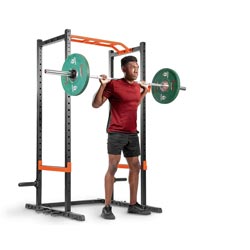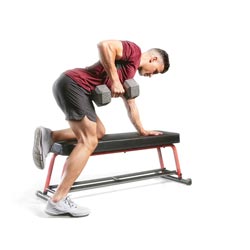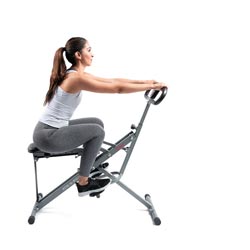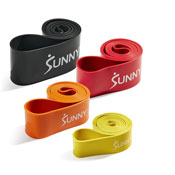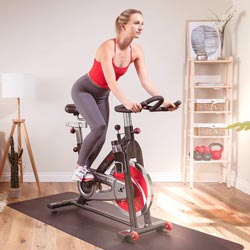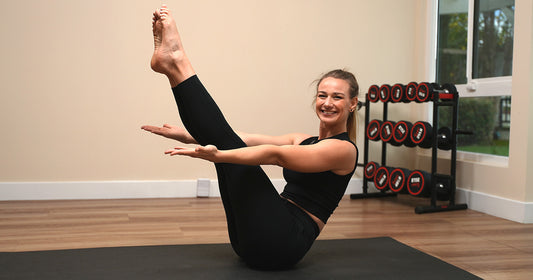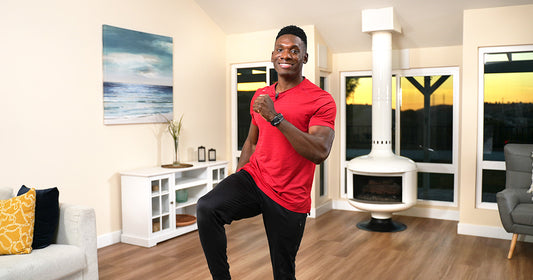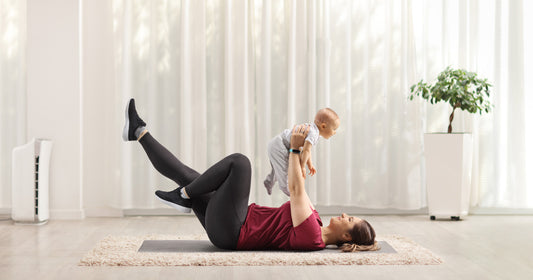How important are the exercises you choose for your workout? That might be a question you find yourself asking often before your workouts.
The exercises you choose are arguably the most important part of any workout program. Although, choosing exercises may be easier said than done, especially if you don’t have the education or experience to know which exercises will help with your specific fitness goals.
If you’re interested in burning lots of calories and getting the biggest payoff for the time and effort you put into your workouts, compound exercises are the answer. Below, discover how powerful compound exercises can be and learn how you can incorporate them into your workouts to make them as efficient as possible.
What Are Compound Exercises?
Compound exercises work out multiple muscle groups simultaneously.
Some examples of compound exercise include deadlifts, squats, push-ups, pull-ups, and lunges.
For example, take one of the most popular compound exercises: the squat. During a squat, you work not just your quads, but your glutes, hamstrings, calves, core, erector spinae, abductors, and adductors.
Because compound exercises work more muscles than isolation exercises - like bicep curls or hamstring curls that work only one muscle - they burn more calories too. If you’re interested in maximizing fat loss while working as many muscles as you can with each exercise, then compound exercises should be incorporated into your workout routine.
3 Benefits of Compound Exercise
Compound exercise can increase muscle growth, burn calories, and save you time. Interested in learning how? The juicy details are below.
1) Gain Strength & Burn More Calories
Using multiple muscle groups simultaneously can help build your body strength faster and increase muscle growth. The more muscles involved in an exercise, the more force the body can produce and the more work that is done.
This not only increases the total number of muscle fibers involved but also requires a larger overall oxygen demand on the body in comparison to isolated exercises focused on smaller muscle groups.
So, what does this mean? By focusing on larger muscle groups and multiple muscle groups working together simultaneously it puts a larger demand on our body - meaning strength and muscle gains, and higher calorie burn.
2) Burn More Calories
By activating multiple muscle groups at once, compound lifts can burn more calories. Your heart rate also increases during compound lifts due to the higher demand it places on your body, which helps burn more calories as well.
This means, if you’re interested in burning more calories or reducing some fat, compound exercises can help. You can burn even more calories by completing compound moves in a circuit to reduce your rest time, increase the intensity of your workout, and ramp up your calorie-burning potential.
3) Reduce Muscle Imbalances & Injury
Compound exercise can help to reduce muscle imbalances and injury that may occur from more isolated (or single-joint) exercises.
When you follow a program with a range of compound, multi-joint exercises, it helps to ensure you’re achieving the proper neuromuscular recruitment for the strength gains you’re looking for.
As opposed to performing single-joint exercises (like bicep curls or calf raises), where that muscle recruitment could be compromised by unbalanced stimulation or fatigue on individual muscle groups (1).
This doesn’t mean that single-joint exercises don’t have a place in your routine. They can be an extremely valuable part of your routine, especially if you’re aiming to strengthen a particular muscle group that is weak.
How to Incorporate Compound Exercises into Your Workout Routine
In your fitness program, I recommend completing compound exercises, or explosive power moves that require the most energy before basic strength or single-joint exercises. These lifts require the greatest coordination and timing of the body and should be performed while you’re freshest for peak performance and reduced risk of injury.
Completing higher demand exercises first allows for the most demanding work to be performed while you’re freshest, allowing for the greatest effort, coordination, and concentration on the exercises that need them (1).
6 Compound Exercises to Add to Your Routine
These are my 6 favorite compound exercises that should be incorporated into your workout routine. All 6 of these compound exercises can be done with various weighted equipment (barbell, dumbbells, kettlebell, resistance bands, bodyweight), and they also have a variety of modifications to make them great for any level from beginner to advanced.
In the videos below, Sunny Trainer James King III explains how to properly do each movement and what key points you should focus on while performing each exercise.
- Squat
- Deadlift
- Bench
- Pull-Up
- Overhead Press
- Reverse-Grip Bent Over Rows
1) Squat
Equipment: barbell, dumbbell, kettlebell, resistance bands, bodyweight
How to:
- Start by standing with feet shoulder-width apart and weight in your heels.
- Keep back straight and chest up.
- Push hips and glutes back as you sit back into your squat.
- Drive through heels back to standing.
- Squeeze/contract glutes and core at the top.

2) Deadlift
Equipment: barbell, dumbbell, kettlebell, resistance bands
How To:
- Start by standing with feet shoulder-width apart and weight in your heels.
- Keep back straight and chest up.
- Sit down and back with your hips and glutes.
- Drive through heels back to standing.
- Squeeze/contract glutes and core at the top.

3) Bench Press
Equipment: barbell, dumbbell, kettlebell, resistance band
How To:
- Grasp the barbell using an overhand grip, slightly wider than shoulder-width apart.
- Lower the bar to your chest, at the nipple line.
- Don't watch the bar—focus on the ceiling.
- Press the bar straight up towards the ceiling and back to the starting position.

4) Pull Up
How To:
- Grab a bar with a grip slightly wider than shoulder-width, with your hands facing away from you.
- Hang all the way down.
- Pull yourself up until your chin is above the bar.
- Pause at the top.
- Lower yourself all the way back down.

5) Overhead Press
Equipment: barbell, dumbbell, kettlebell, resistance bands
How To:
- Start with hands at shoulder level, do not let your elbows flare out to the side.
- Press hands straight up and overhead.
- As you press, keep shoulder blades down and back and engage your core.
- Do not arch back when pressing overhead.
- Lock elbows once arms are overhead.

6) Reverse-Grip Bent Over Row:
Equipment: barbell, dumbbell, kettlebell, resistance bands
How To:
- Keep your head up and your eyes looking forward throughout the whole movement.
- Keep your back straight throughout the entire set.
- Engage your back to pull the weight up towards your rib cage.
- Pause at the top of the exercise and squeeze your shoulder blades together.
- Don't let the weight drop down quickly - keep it slow.
- The bent-over row can cause back injuries, so make sure your technique is perfected before loading on the weight.

4 Key Points of Focus During Compound Exercises
When completing any compound exercise, there are some guidelines to think about to ensure you’re getting the most out of each exercise. Below I’ve included 4 key points you should focus on when performing compound exercises during your own routine.
1) Move Slow & Controlled
- Reverse direction smoothly and with little acceleration at the upper and lower range of each movement.
- Maintain proper positioning and path of movement over the full range of motion.
- Focus on intensely contracting the target muscles (2).
2) Avoid Stress on Your Joints
- Avoid positioning your joints at the end of their range of motion if it results in excessive stretching or compression of joint tissues in that position.
- Avoid extreme stretch or excessive force on joints.
- Do not lock out your joints.
3) Select the Proper Weight
- Use a weight you can perform at least a moderate number of reps with good form.
- Moderate loads can be more effective for stimulating muscular strength and size gain.
- Starting weight should be determined by being able to perform an exercise for 60-90 seconds, with good form. Then adjust from there.
4) Have the Right Mindset
- Focus on your muscle contraction.
- Use your intellect by focusing on your muscles, instead of intuitively or instinctively focusing more on the weight.
Final Thoughts
Compound exercises can be used to improve muscular strength and size, safely and effectively. While both single and multi-joint exercises have advantages and disadvantages, if your goal is to maximize your overall muscular strength, size, functional ability, and calorie burn, multi-joint compound exercises should be a part of your routine!
1. Influence of Exercise Order on Maximum Strength and Muscle Volume in Nonlinear Periodized Resistance Training, Journal, 2010. https://journals.lww.com/nsca-jscr/Fulltext/2010/11000/Influence_of_Exercise_Order_on_Maximum_Strength.10.aspx Accessed 28 February 2022
2. Tips For More Time Efficient High Intensity Training Workouts, Journal, 2014. https://baye.com/blog/page/15/ Accessed 1 March 2022

